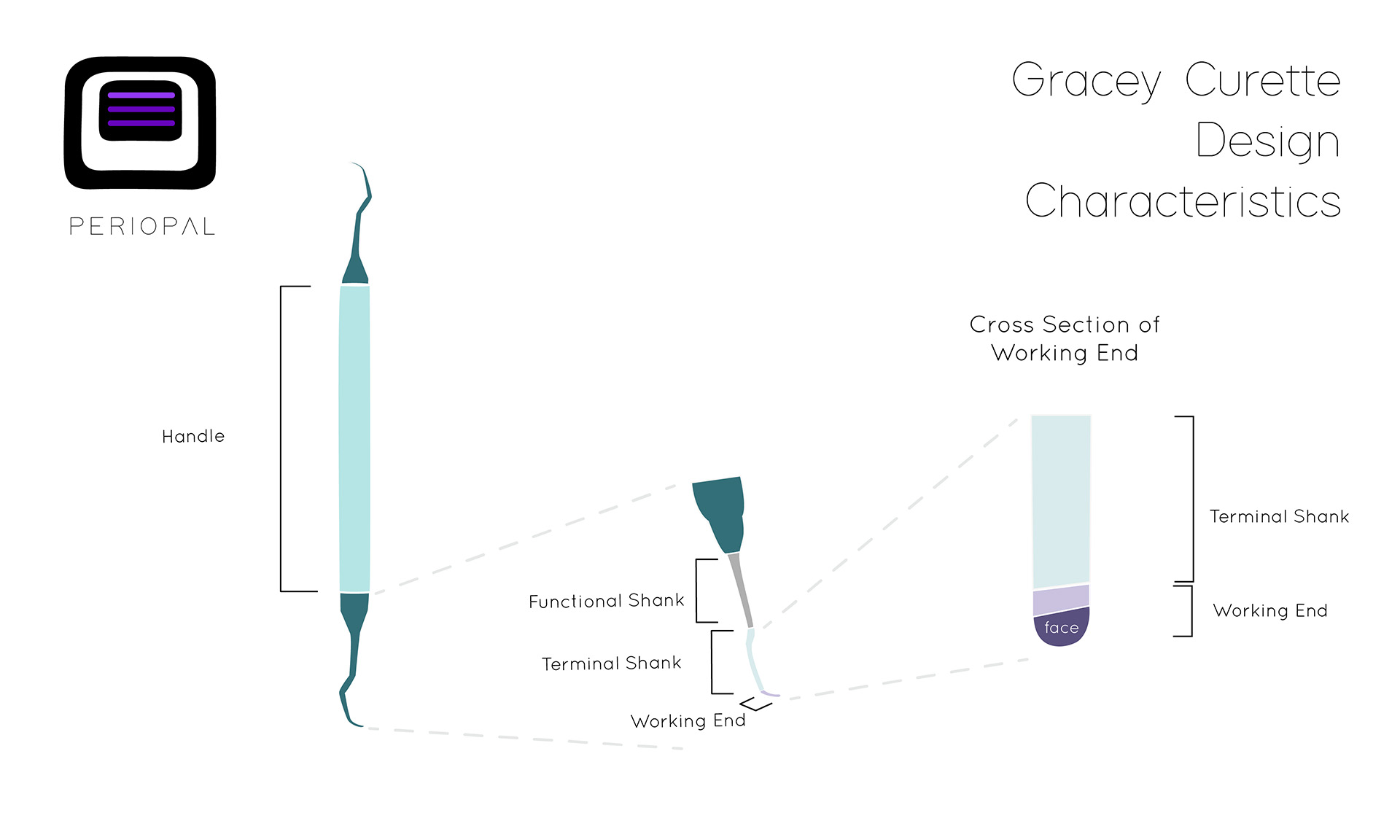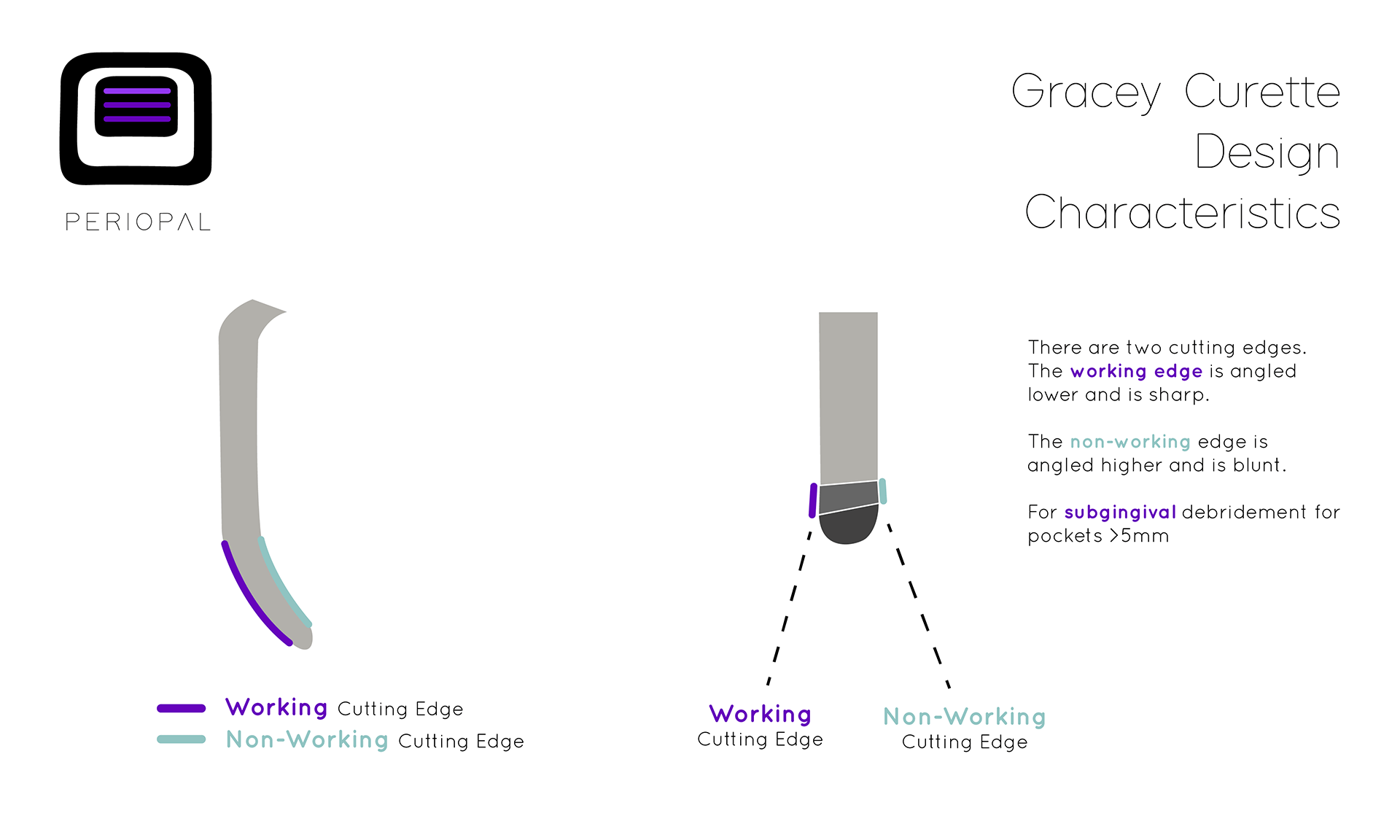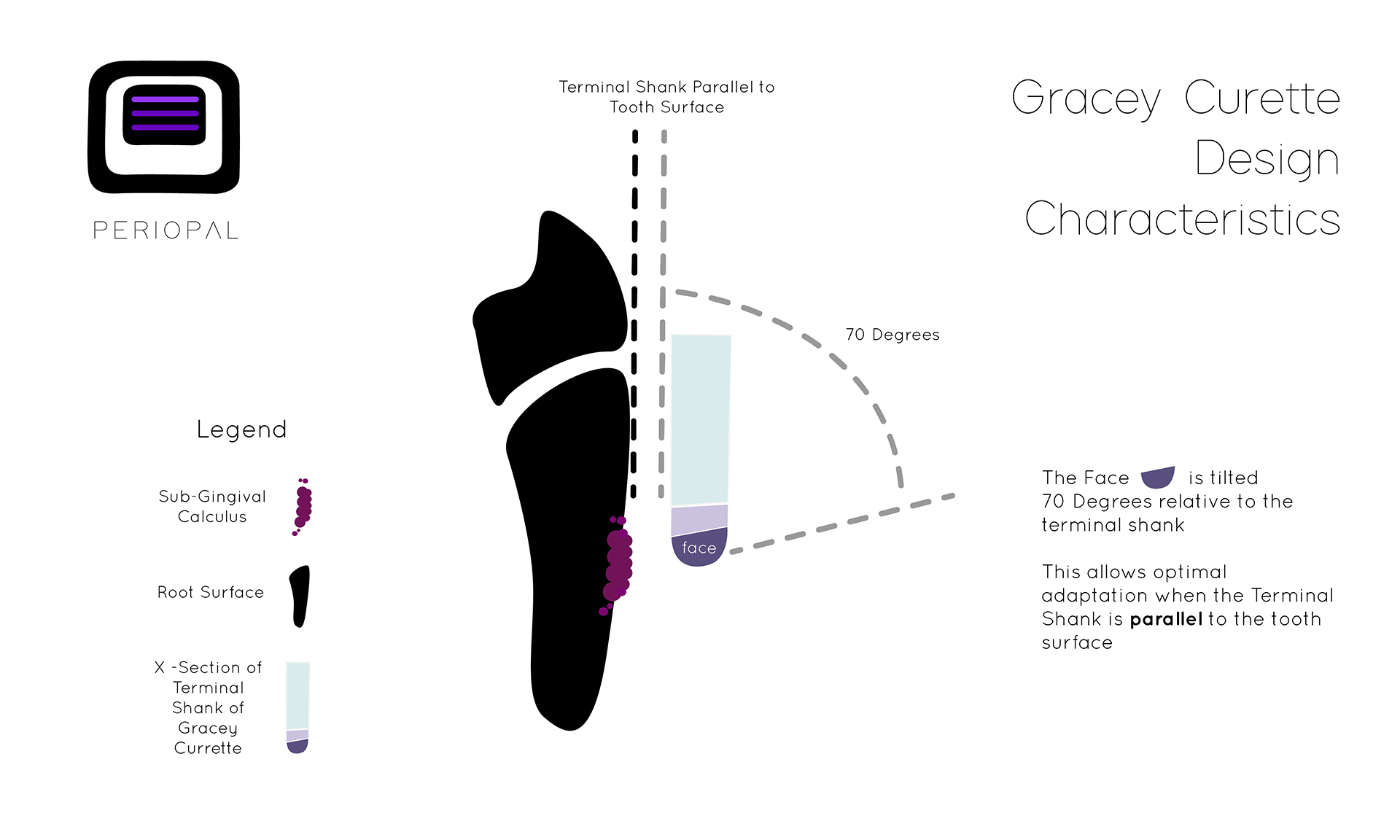Gracey curette
unique design characteristics
Gracey curette
Area specific instrument for subgingival debridement
This type of curette has specific design created for use on certain teeth and certain tooth/root surfaces. Gracey’s curettes are named after Dr Clayton Gracey and designed in 1940’s.
They have specific design characteristics:
- The face of the working end is tilted in relation to terminal shank at 70 degrees
- Lower edge of the working end is sharp and used for calculus removal – working cutting edge
- Upper edge of the working end is blunt and not used for calculus removal – non-working cutting edge
- Long, complex functional shank
Other design features of Gracey curettes are similar to those of universal curettes:
- Rounded toe and back
- Semi-circular cross section
The Gracey series continues to evolve and is currently available in standard, rigid, extended shank (after five) and miniature working end versions (mini five, micro-mini five).
Gracey curette can be used to remove subgingival calculus deposits from deep periodontal pockets (PPD>5mm).
The original Gracey series contains 14 curettes. In practice, a set of three or four Gracey curettes may be enough to debride entire dentition.
Commonly used are Gracey 1&2, Gracey 5&6, Gracey 7&8, Gracey 11&12, Gracey 13&14.


